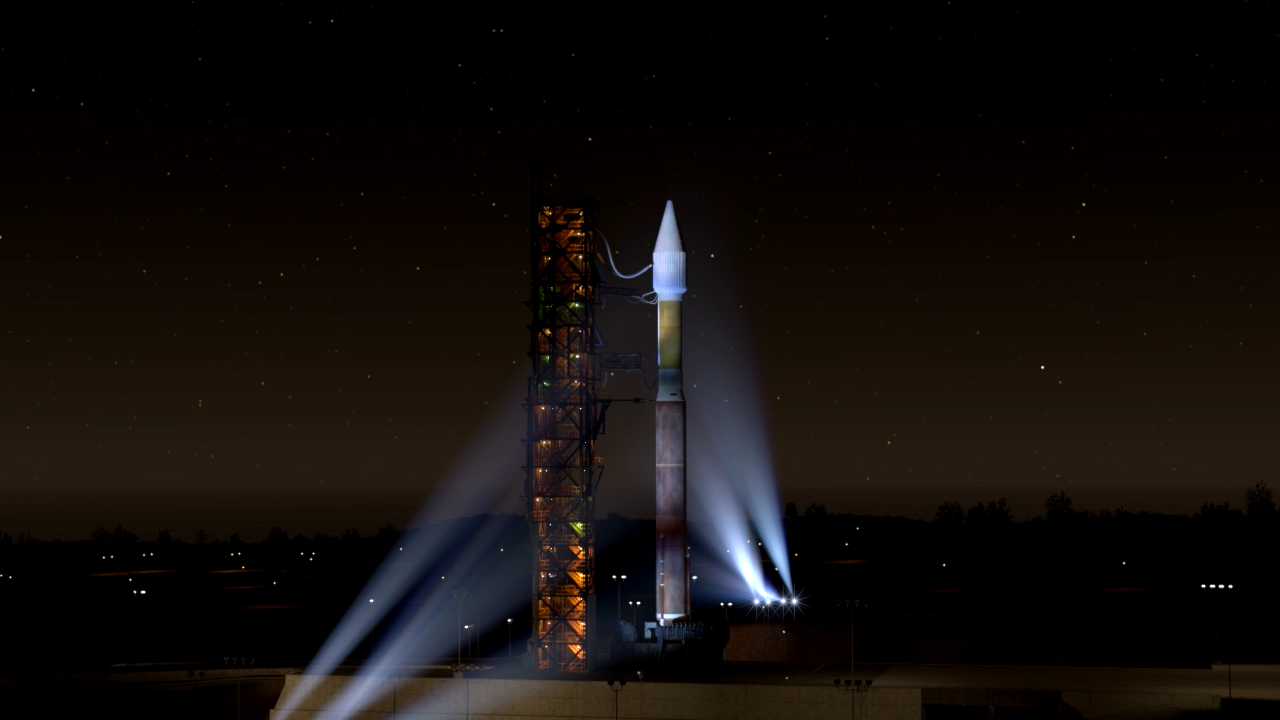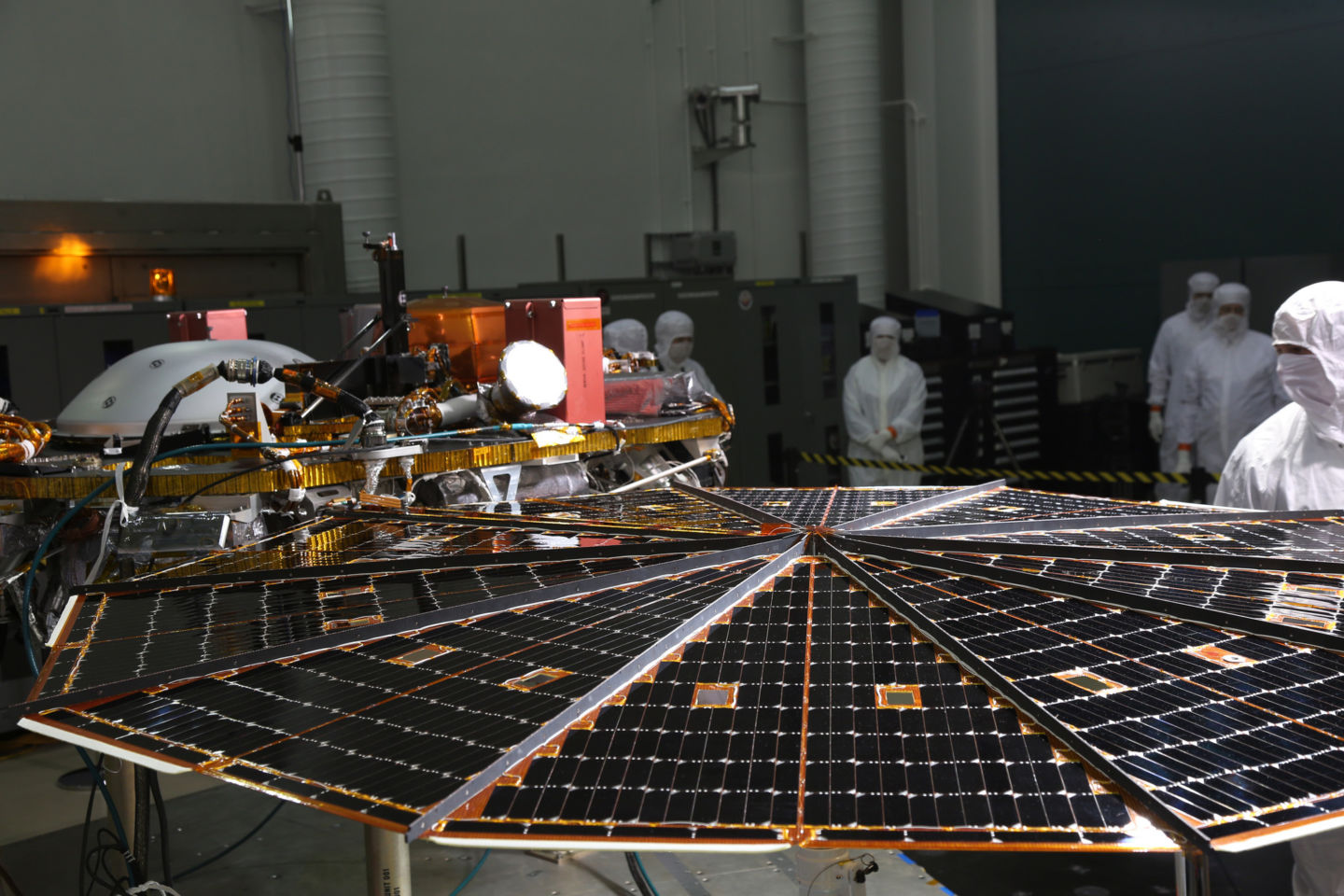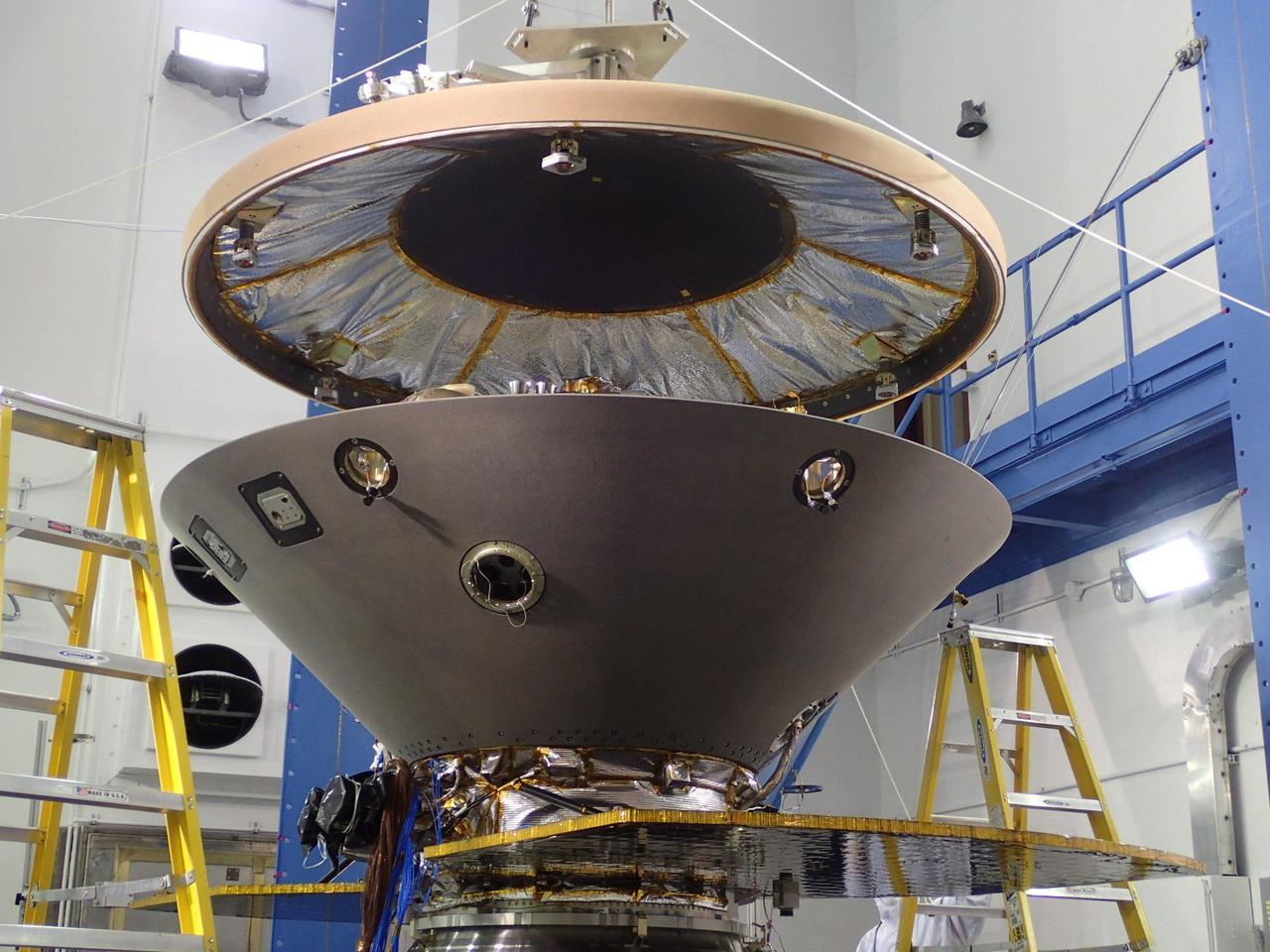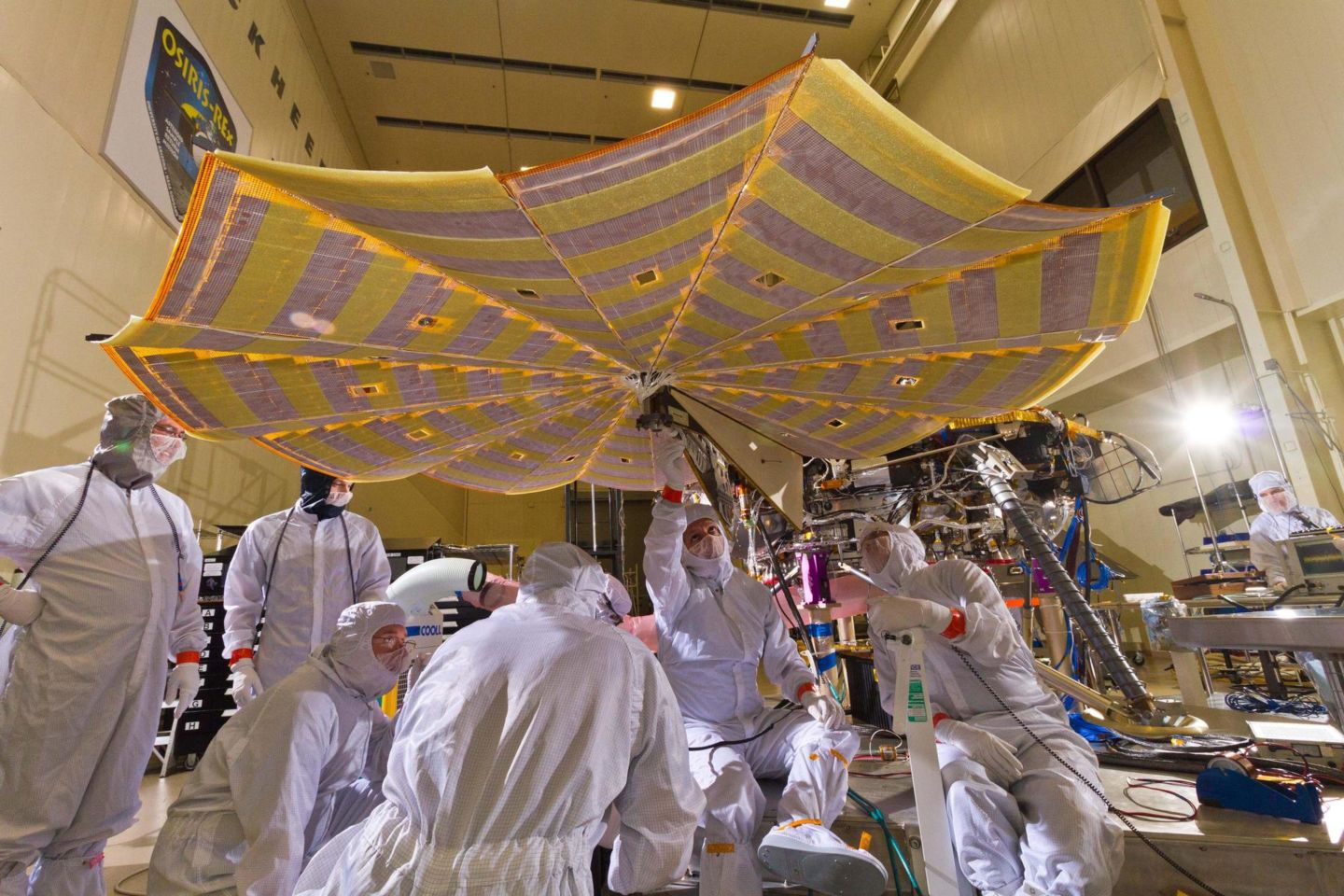InSight flew to Mars: the launch was successful, we are waiting for the arrival of the device
InSight flew to Mars, it remains to wait for the arrival of the device.

On Saturday, May 5, NASA sent the InSight research device to Mars . Its main task is to study the Martian rocks at a depth accessible to the drill. Riding on the surface of the Red Planet, like Opportunity or Curiosity, this device will not, it should remain in place. Nevertheless, its scientific value is not lower, and possibly higher than that of rovers that are already traveling on Mars.
Interestingly, since 2008, Insigth was the first NASA lander to be shipped to Earth’s neighbor. If everything goes as planned, then the system will reach Mars on November 26th. After she sits on the planet, a test of scientific instruments will be launched. If everything is fine with them, then the seismometer and thermal probe will immediately begin their work. These two tools will allow you to draw up a local heat map of the planet, as well as to find out what constitutes a marsquake.
InSight was launched two years late. The launch of the device was supposed to take place in March 2016, but it turned out that its main scientific instrument, the SEIS seismometer, was faulty. For this reason, the agency canceled the launch and took up the solution to the problem.

When the seismometer passed a routine check after fixing technical problems, the agency planned a new launch date. This time the device went to Mars according to the schedule. Traditionally, scientists and engineers were afraid of the first stage of the mission - the launch of the system into space on a launch vehicle. This is the most dangerous stage, because failure can cross out all further stages and the whole mission. But everything went well, and the Atlas V booster did its job. The weather conditions at the time of launch were quite difficult - a dense fog at the launch site, but the project team decided to launch the rocket and the device.

This mission is also unique because the launch was carried out from the base of Vanderberg, which is located in the district of Santa Barbara, California, USA. No interplanetary mission has begun here, so on Saturday the initiative was made.
If the device weighed a couple of tons, then it would have to change both the launch site and the launch vehicle. But the mass of the system is only 721 kg, so Atlas V handled this load by sending the landing page along the correct path to the Red Planet. If something went wrong, then the project team would have time until June 8 of this year - the launch window was quite wide, although, fortunately, everything was done the first time.
The last time the agency tried to land the device on Mars, everything went smoothly. Then, in 2011, NASA sent a Curiosity rover to Earth’s neighbor. The rover was descending on the “sky crane”, the so-called landing system of the rover weighing about 1 ton. As for the Lender, it will be descended using a combined system of parachutes and rocket engines (total number 12). The speed of entry into the atmosphere will be 6.3 km / s.

The duration of the scientific mission of the Mars rover should be about two years - this is according to plan. It is possible that scientists will extend the mission if the device functions normally. Full work is scheduled for the 17th week after the descent.
The main functional part of the Lender is a seismometer. It is in a sealed capsule. If the seismometer were not closed, then the readings of the device would be incorrect due to the movement of the air masses of Mars. The atmosphere on the Red Planet, although rarefied, is quite capable of making the ultra-precise instrument vibrate, which would affect the accuracy of the readings. It was the tightness that was the problem discovered by the scientist ive 2015 - then the experts found a leak in the shell of the case, which should have been completely tight.

Any mission involving the sending of a scientific system to another planet is unusually complex. It requires a mass of engineering, administrative, scientific work. Hundreds of thousands of man-hours and tens and hundreds of millions of dollars — that is the price that mankind pays for scientific knowledge.
But this is nothing compared to the information that a person can receive. Scientists hope that the data sent to the Earth by the lender will clarify the origin of the solar system and its planets. Now there are several theories that deserve attention, and each has its own advantages and disadvantages. In order to know exactly what happened billions of years ago, you need to continue to study space.

On Saturday, May 5, NASA sent the InSight research device to Mars . Its main task is to study the Martian rocks at a depth accessible to the drill. Riding on the surface of the Red Planet, like Opportunity or Curiosity, this device will not, it should remain in place. Nevertheless, its scientific value is not lower, and possibly higher than that of rovers that are already traveling on Mars.
Interestingly, since 2008, Insigth was the first NASA lander to be shipped to Earth’s neighbor. If everything goes as planned, then the system will reach Mars on November 26th. After she sits on the planet, a test of scientific instruments will be launched. If everything is fine with them, then the seismometer and thermal probe will immediately begin their work. These two tools will allow you to draw up a local heat map of the planet, as well as to find out what constitutes a marsquake.
InSight was launched two years late. The launch of the device was supposed to take place in March 2016, but it turned out that its main scientific instrument, the SEIS seismometer, was faulty. For this reason, the agency canceled the launch and took up the solution to the problem.

When the seismometer passed a routine check after fixing technical problems, the agency planned a new launch date. This time the device went to Mars according to the schedule. Traditionally, scientists and engineers were afraid of the first stage of the mission - the launch of the system into space on a launch vehicle. This is the most dangerous stage, because failure can cross out all further stages and the whole mission. But everything went well, and the Atlas V booster did its job. The weather conditions at the time of launch were quite difficult - a dense fog at the launch site, but the project team decided to launch the rocket and the device.

This mission is also unique because the launch was carried out from the base of Vanderberg, which is located in the district of Santa Barbara, California, USA. No interplanetary mission has begun here, so on Saturday the initiative was made.
If the device weighed a couple of tons, then it would have to change both the launch site and the launch vehicle. But the mass of the system is only 721 kg, so Atlas V handled this load by sending the landing page along the correct path to the Red Planet. If something went wrong, then the project team would have time until June 8 of this year - the launch window was quite wide, although, fortunately, everything was done the first time.
The last time the agency tried to land the device on Mars, everything went smoothly. Then, in 2011, NASA sent a Curiosity rover to Earth’s neighbor. The rover was descending on the “sky crane”, the so-called landing system of the rover weighing about 1 ton. As for the Lender, it will be descended using a combined system of parachutes and rocket engines (total number 12). The speed of entry into the atmosphere will be 6.3 km / s.

The duration of the scientific mission of the Mars rover should be about two years - this is according to plan. It is possible that scientists will extend the mission if the device functions normally. Full work is scheduled for the 17th week after the descent.
The main functional part of the Lender is a seismometer. It is in a sealed capsule. If the seismometer were not closed, then the readings of the device would be incorrect due to the movement of the air masses of Mars. The atmosphere on the Red Planet, although rarefied, is quite capable of making the ultra-precise instrument vibrate, which would affect the accuracy of the readings. It was the tightness that was the problem discovered by the scientist ive 2015 - then the experts found a leak in the shell of the case, which should have been completely tight.

Any mission involving the sending of a scientific system to another planet is unusually complex. It requires a mass of engineering, administrative, scientific work. Hundreds of thousands of man-hours and tens and hundreds of millions of dollars — that is the price that mankind pays for scientific knowledge.
But this is nothing compared to the information that a person can receive. Scientists hope that the data sent to the Earth by the lender will clarify the origin of the solar system and its planets. Now there are several theories that deserve attention, and each has its own advantages and disadvantages. In order to know exactly what happened billions of years ago, you need to continue to study space.
